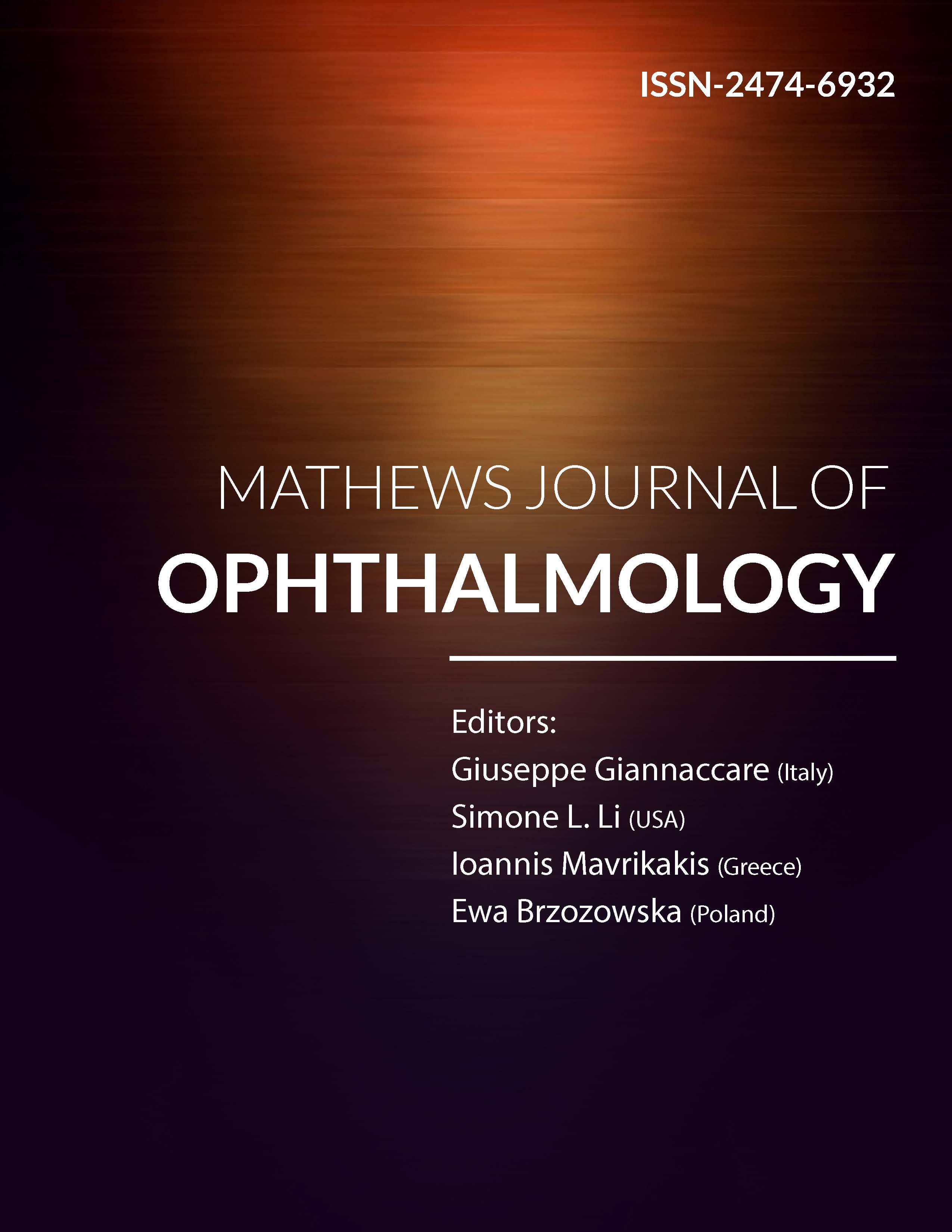
Information Links
Previous Issues Volume 6, Issue 1 - 2021
Effect of Limbal Incision Positions on Corneal Q-Value in Cataract Surgery: A Retrospective Study of Monofocal IOL and Trifocal IOL
Yuchen Wang1,2, MD; Zizhen Wang3, Bsc; Mingyan He1,2, MD; Yinan Liu1,2, MD; Ziyuan Liu1,2, MD; Xiaoyong Chen1,2*, MD, PhD; Wei Wang1,2, MD, PhD
1Department of Ophthalmology, Peking University Third Hospital, 49 North Garden Road, Haidian District, Beijing 100191, P R China
2Beijing key Laboratory of restoration of damaged ocular nerve, Peking University Third hospital, 49 North Garden Road, Haidian District, Beijing 100191, P R China
3Peking University Health Science Center, 38 North Garden Road, Haidian District, Beijing 100191, P R China
*Yuchen Wang and Zizhen Wang contributed equally to this work
*Corresponding author: Xiaoyong Chen, Professor, Department of Ophthalmology, Peking University Third Hospital, Beijing key laboratory of restoration of damaged ocular nerve, Peking University Third hospital, 49 North Garden Road, Haidian District, Beijing 100191, P R China, Tel: +86-15611908041; E-mail: [email protected]
Received Date: July 16, 2021
Published Date: August 16, 2021
Copyright: Chen X, et al. © (2021). This is an open-access article distributed under the terms of the Creative Commons Attribution License, which permits unrestricted use, distribution, and reproduction in any medium, provided the original author and source are credited.
Citation: Chen X, et al. (2021). Effect of limbal incision positions on corneal Q-value in cataract surgery: a retrospective study of monofocal IOL and trifocal IOL. Mathews J Ophthalmol. (6)1:26.
ABSTRACT
Purpose: To observe the changes in corneal Q value preoperatively and postoperatively in cataract patients and to further explore the influence of incision positions on Q value.
Setting: The Peking University Third Hospital, Beijing, China.
Design: Retrospective nonrandomized study.
Methods: Eyes that implanted intraocular lens (IOL) ZCB00 or Zeiss 839 were included. The corneal Q values were compared preoperatively, 1 week and 1 month postoperatively, the incision positions were divided into groups to review the influence on Q values.
Results: We finally analyzed 158 eyes of 103 patients, the corneal Q values decreased significantly postoperatively, and the Q values tend to be stable at 1 month after surgery. Moreover, the Q values in superior incision group and temporal incision group were lower than that in nasal, nasal and temporal arc group at both 1 week and 1 month after surgery with statically significance; the reduction of angle kappa postoperatively had obvious advantages in the superior and temporal incision group.
Conclusions: Corneal Q-value would change after cataract surgery, and the influence of incision position on corneal Q-value need still to be further clear, clarifying the influence of surgical operation, especially incision making, on corneal Q-value will achieve better vision and visual quality after cataract surgery.
KEYWORDS: Intraocular lens; Corneal Q value; Incision position; High order aberration; Visual quality